#proft's eidetic memory
Explore tagged Tumblr posts
Text

Proft's Eidetic Memory (Murders at Karlov Manor) - Julie Dillon
9 notes
·
View notes
Photo
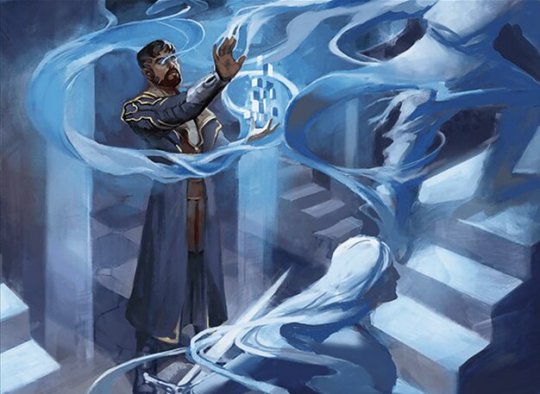
2 notes
·
View notes
Text



Alquist Proft, Master Sleuth
#alquist proft#alquist proft master sleuth#proft's eidetic memory#murders at karlov manor#andreas zafiratos#peter diamond#julie dillon#magic the gathering#mtg#magic cards#magic the card game#mtg cards
1 note
·
View note
Text
Pro Tour - Regional Championships 9
A few weekends ago, the latest rounds of Regional Championships wrapped up. This was a month-long series of high-level Standard tournaments around the world, with winners earning invites to Pro Tour Edge of Eternities where they will be able to compete for even bigger prizes and an invite to the World Championship later this year.


Starting only a couple of weeks after the release of Tarkir: Dragonstorm, these tournaments are a great way to examine how that set effected Standard. We'll get anoter look at how the new Final Fantasy set has affected Standard this weekend at the Pro Tour in Las Vegas. But first, let's check out what decks have been dominant over the past month.
(Tournament results coverage continued under the cut.)
The main story coming out of Tarkir: Dragonstorm was Cori-Steel Cutter. If you were following my competitive retrospective for Dragonstorm, or if you've been playing Standard recently, you know that Cori-Steel Cutter is an aggressive powerhouse. In Standard, Blue/Red Prowess decks using Monastery Swiftspear and Stormchaser's Talent quickly adopted the Cutter, letting it rocket them to the top of the meta. This was especially true right as the new format began, with Prowess decks making up 3 of the top 4 decks at the Europe/Middle East/Africa Regional Championship on the weekend of April 27.
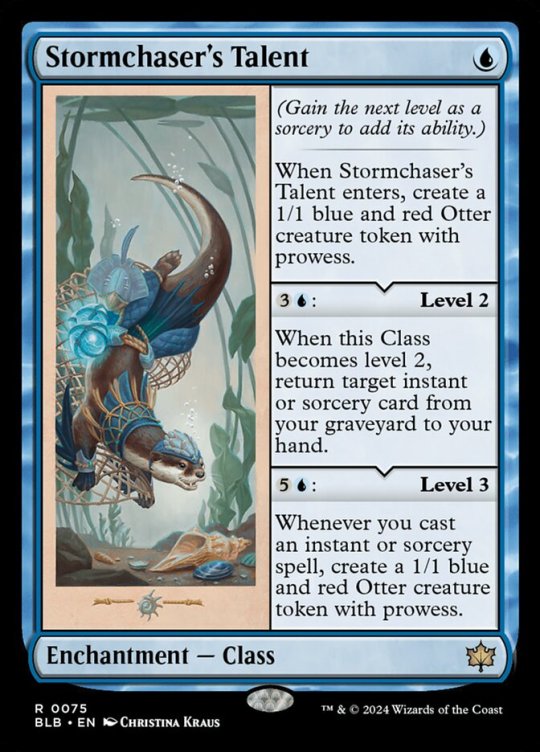

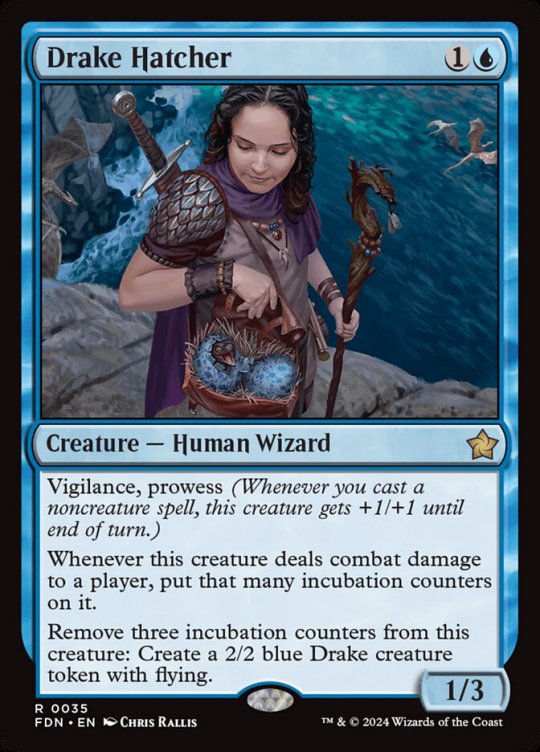
The meta began to adjust to this new threat over the next month, but Prowess decks empowered by Cori-Steel Cutter maintained a strong presence throughout the Regional Championships.
The next weekend, a couple of decks emerged to challenge the dominance of Prowess. The first, Omniscience Combo, won in Brazil and appeared as a semifinalist in the USA. This deck looks to dig through its library, tossing cards into the graveyard with spells like Roiling Dragonstorm and Moment of Truth. From there, it uses Abuelo's Awakening to reanimate Omniscience as a 1/1 creature. Once it has the ability to cast spells for free, it can continue rummaging through its library, easily removing incoming threats with spells like Temporary Lockdown and Ephara's Dispersal before winning with a big beater like Marang River Regent.



The second deck to challenge the throne was Abhorrent Oculus combo decks, which won the USA tournament that weekend. These decks primarily win through one of a pair of combos that will quickly create a massive flying threat. The first is Abhorrent Oculus, a 3-mana 5/5 flier that manifests dread on the opponent's turn, combined with Helping Hand, a spell that returns a 3-mana creature from the graveyard to play. The deck can quickly discard the Oculus on turn 2 or 3, then reanimate it the turn after, if not immediately. The other combo is Steamcore Scholar, a 2/2 with flying and vigilance that draws two cards and discards a card when it enters, with Proft's Eidetic Memory, an enchantment that makes creatures stronger the more cards you draw. With Eidetic Memory in play, the Scholar can essentially enter as a 3-mana Serra Angel with extra card advantage.
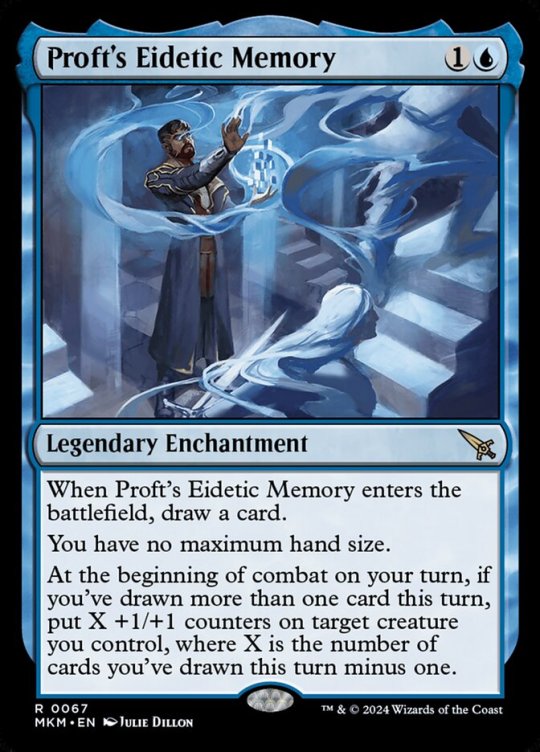
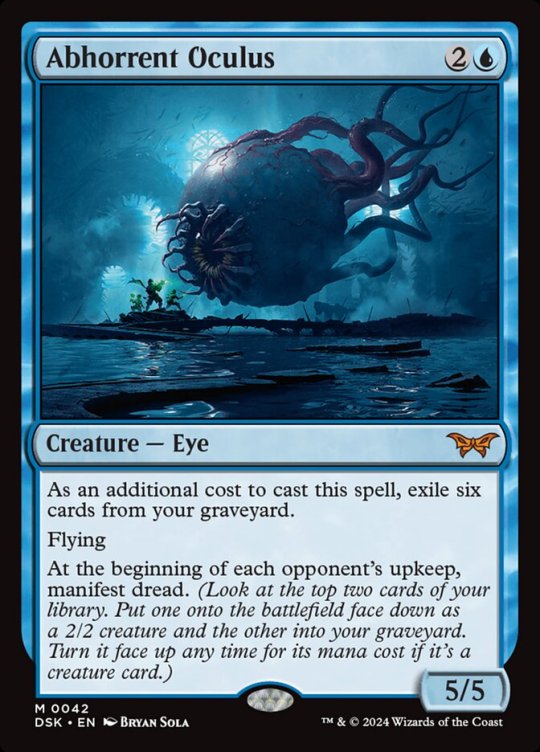

The weekend of May 11th saw the Regional Championships for Australia/New Zealand and China. The Chinese RC saw Prowess and Omniscience Combo in the top 4, while the Aus-NZ RC was a lot more varied, with other aggro and midrange decks forcing the Prowess and Oculus decks into the bottom half of the top 8. The winning deck from that event was Blue/Black Midrange, a deck that remained mostly unchanged after Dragonstorm. The tempo provided by cards like Deep-Cavern Bat, Floodpits Drowner, and Tishana's Tidebinder allow this deck to trip up more focused decks like Prowess and combo, until it can get a win with Kaito, Bane of Nightmares.



White/Black Bounce also makes a successful showing this weekend, appearing in the top 4 of both tournaments. This midrange deck also relies on using disruption pieces like Momentum Breaker and Temporary Lockdown to create stumbling blocks in the plans of Prowess and combo decks, then uses creatures like the new Sunpearl Kirin to repeatedly return these enchantments to hand, then cast them again for even more value. In the case of the White/Black midrange deck, the win condition is often Unholy Annex // Ritual Chamber, which allows the deck to draw the cards it needs to repeatedly answer threats, while also summoning a huge threat to end the game.

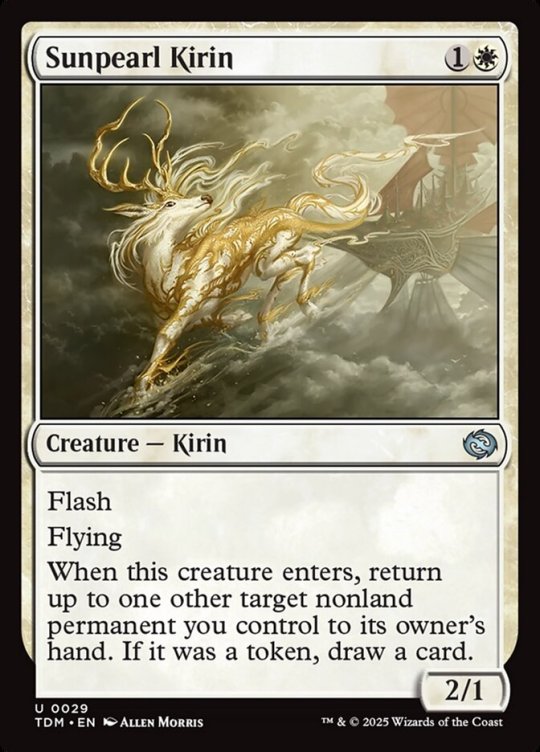

The fourth and fifth weekends of the Regional Championships we had the second USA RC, the Taipei RC, and the Canadian RC. In these, we see a lot of familiar faces: Prowess wins the Taipei RC and appears in the top 4 at both USA and Canada; Omniscience wins in Canada, and Blue/Black Midrange and White/Black Bounce make multiple appearances in the top 4 of these tournaments. We do see that Oculus Combo is starting to lose favor, going both weekends without a top 8 appearance. Creating a single big flier is simply not enough of a payoff when you need to worry about cards like Momentum Breaker.
Mono-Red Aggro had been making occassional appearances in the top 8s of previous tournaments, but this weekend it returns to the top by winning in the USA. This aggro deck forsakes the Cori-Steel Cutter and blue draw effects, to instead focus on the package of Heartfire Hero, Emberheart Challenger, and Manifold Mouse from Bloomburrow. While it had been assumed that Mono-Red's niche in the meta had been usurped by the Prowess deck, which could simply threaten to go faster, the threat of disruption from midrange decks didn't bother it as much. Red Aggro has much more redundancy in its effects, allowing for a greater number of hiccups before its plans fall apart.
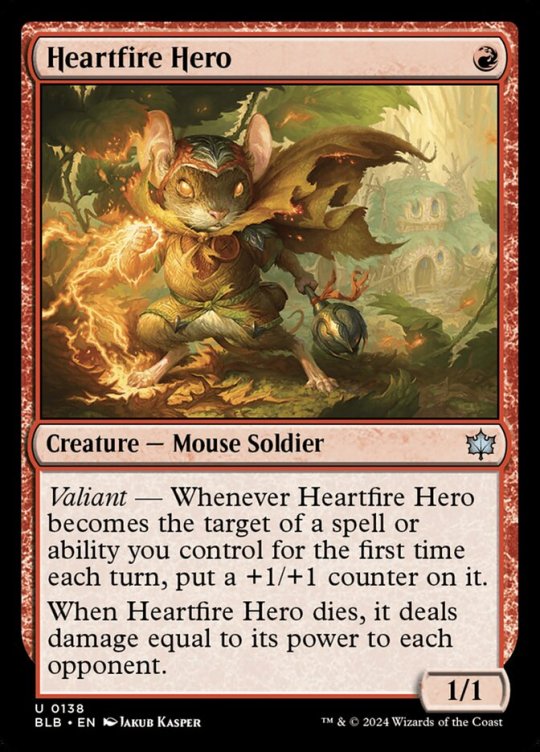


We also saw straight-up control decks claw their way back into the meta for the first time in a few weeks. Beza, the Bounding Spring provides an excellent roadblock for White/Blue Control to throw in the way of faster decks while it uses Stock Up to keep its hand full of counterspells and removal. Once the aggressive opponent has been brought under control, it can win with Beza, or a Marang River Regent. Domain Control has been a mainstay of Standard for a while now, and was fortuantely able to get back to relevance after Dragonstorm. This deck uses the powerful draw engine Up the Beanstalk combined with the Overlord cards from Duskmourn: House of Horror. As the top players around the world are finding ways to play around powerful threats like Omniscience and Cori-Steel Cutter, control decks like these are making a comeback.
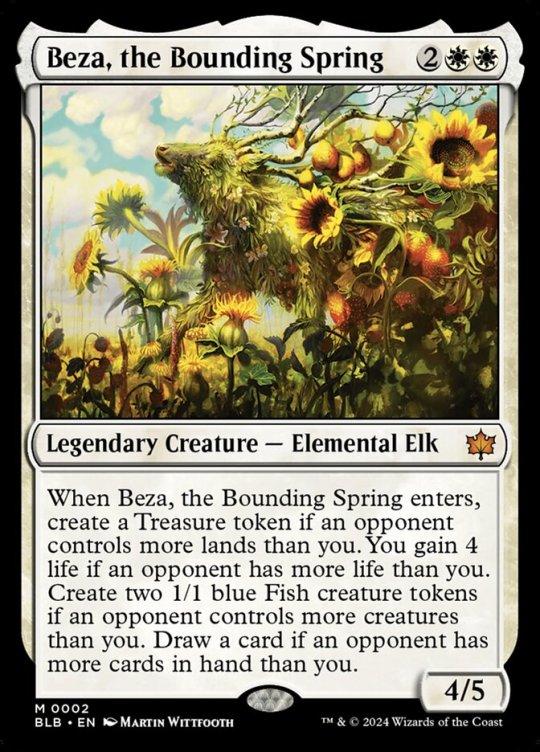
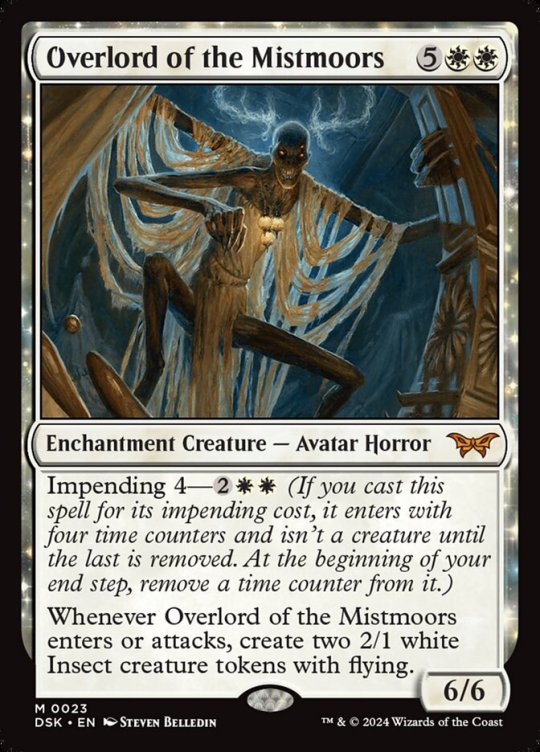
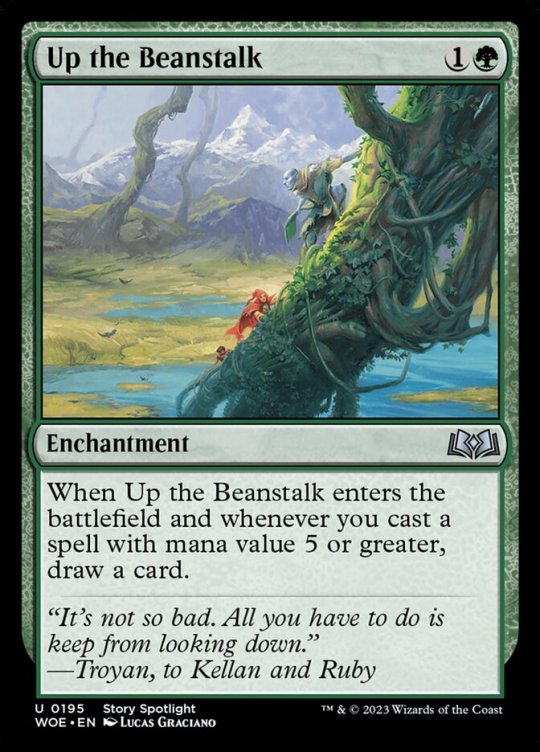
And we end the Regional Championships on the weekend of June 1, with a lot of familiar faces appearing in Mexico/Central America/Carribean and South America. Omniscience Combo won the SouthAm RC and made up four of the top 8 in Mexico. Blue/Black Midrange had two decks in the top 4 in South America, and Prowess, Domain, and Red Aggro all made appearances in the top 4. And that leaves us with a Standard metagame that is still dominated by Prowess decks with Omniscience pulling up a distant second in metagame percentage. But, with high-level results showing that these decks can consistently be toppled by other strategies, we're still seeing a lot of play for Red Aggro and White/Black Bounce, with Domain Control, White/Blue Control, Blue/Black Midrange, and Oculus Combo also seeing some success.
With Pro Tour Final Fantasy this weekend, we'll have to see if the meta can shake itself out when played at the highest level, or if Prowess will utterly dominate the competition.


0 notes
Text
Tarkir: Dragonstorm Retrospective - Top 20 Competitive Cards
Number 10 - 32 points
Glacial Dragonhunt
Standard (32)
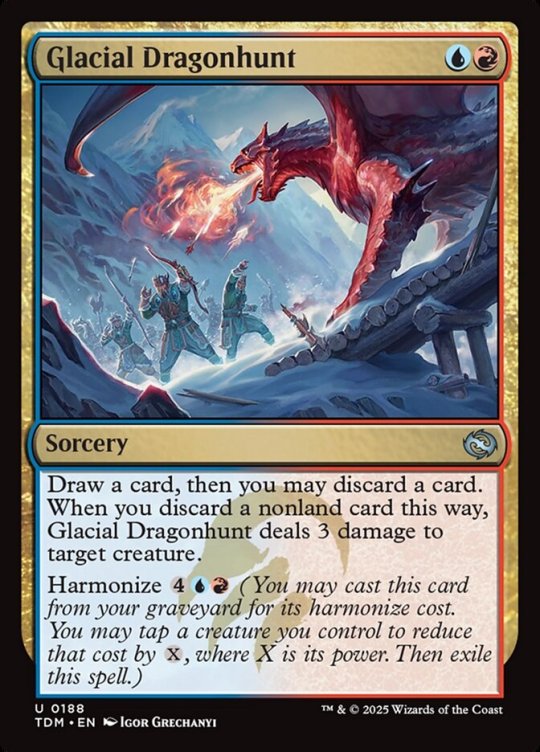
Glacial Dragonhunt is a pretty solid cantrip, allowing you to dig through your deck while also removing a creature if you don't discard a land. It then lets you do that again by casting it from the graveyard, turning it into a 2-for-1. Glacial Dragonhunt earned all of its points from Standard Abhorrent Oculus decks, where it filled a similar role to Winternight Stories: drawing cards to trigger Proft's Eidetic Memory while also discarding Abhorrent Oculus so that it could be reanimated later. The ability to do both those things while also removing a problem creature makes Glacial Dragonhunt absolutely great in Oculus decks.
While Ugin, Eye of the Storms and Glacial Dragonhunt ended up tied in points, I gave the edge to Glacial Dragonhunt, which saw more play in the Regional Championships.
(I score competitive cards by assigning them points for appearing in the main deck or sideboard of Top 8 decks at larger tournaments such as MTGO Challenges or Magic: Spotlight events, and cards earn 2 points for appearing in the Top 8 at the biggest tournaments such as the Pro Tour and Regional Championships.)
#magic the gathering#mtg#mtg commander#mtg edh#edh#mtg dragonstorm#dragonstorm competitive retrospective
1 note
·
View note
Text
Tarkir: Dragonstorm Retrospective - Top 20 Competitive Cards
Number 12 - 31 points
Winternight Stories
Standard (30), Modern (1)

Winternight Stories is quite a strong card draw spell, giving you three cards for only three mana, and then doing it again from the graveyard. In a blue deck with many creatures, or with creatures that it actively wants to discard, this spell is fantastic. Almost all of Winternight Stories's points come in Standard Abhorrent Oculus decks, where it fuels the two main win conditions: it discards the titular creature so that it can be reanimated, and it draws a bunch of cards for Proft's Eidetic Memory, rapidly buffing an attacker. With Eidetic Memory, it doesn't matter that it's sorcery speed, since you would want to draw the cards on your turn anyways.
(I score competitive cards by assigning them points for appearing in the main deck or sideboard of Top 8 decks at larger tournaments such as MTGO Challenges or Magic: Spotlight events, and cards earn 2 points for appearing in the Top 8 at the biggest tournaments such as the Pro Tour and Regional Championships.)
#magic the gathering#mtg#mtg commander#mtg edh#edh#mtg dragonstorm#dragonstorm competitive retrospective
1 note
·
View note
Text
Tarkir: Dragonstorm Retrospective - Top 20 Competitive Cards
Number 13 - 27 points
Heritage Reclamation
Standard (23), Pauper (4)

Heritage Reclamation is quite a flexible answer to a lot of problems one might face in Standard. In addition to the typical Naturalize effects of removing an artifact or enchantment, Heritage Reclamation is also capable of exiling a card from a graveyard, on top of drawing you a card. This makes it a great answer to sideboard in against decks whose main win condition is returning a creature from the graveyard to play, such as trying to reanimate Abhorrent Oculus. Heritage Reclamation has earned its points in the sideboard of a variety of green decks in Standard, which can use it against Oculus, or against cards like Proft's Eidetic Memory.
While Elspeth, Storm Slayer and Heritage Reclamation are tied in points, I gave the edge to Heritage Reclamation for seeing more play in the Regional Championships.
(I score competitive cards by assigning them points for appearing in the main deck or sideboard of Top 8 decks at larger tournaments such as MTGO Challenges or Magic: Spotlight events, and cards earn 2 points for appearing in the Top 8 at the biggest tournaments such as the Pro Tour and Regional Championships.)
#magic the gathering#mtg#mtg commander#mtg edh#edh#mtg dragonstorm#dragonstorm competitive retrospective
1 note
·
View note
Text
MTG Pro Tour—PT Aetherdrift
This weekend (Feb 22-23, 2025) was one of the biggest Standard tournaments of the year, Pro Tour Aetherdrift at MagicCon Chicago. Over 300 players competed in rounds of Aetherdrift Draft and Standard Constructed, but we're going to be focusing on the Standard decks that took the top 8 positions of the tournament. Each player in the top 8 will be earning an invite to the 2025 World Championship. Congratulations to Matt Nass for winning this tournament!


(Tournament recap continued under the cut)
The top 8 of Pro Tour Aetherdrift shows a Standard metagame dominated by two archetypes: Overlord Domain and Prowess Aggro. Aggro decks always do well in new metagames such as this, with a new set released only a week before the event, but it is surprising to see Domain as dominant as it is.
Domain Control has been an archetype in Standard for most of the past year, combining the powerful draw engine Up the Beanstalk with Leyline Binding and some way of getting may different basic land types into play. The archetype got a major boost a few months ago with the Overlord cycle from Duskmourn: House of Horrors, which trigger Up the Beanstalk even when cast with Impending. Overlord of the Hauntwoods in particular slots into the deck perfectly, giving it full Domain, ramping, and getting the additional card draw from Up the Beanstalk.
The Overlord Domain version of the deck combines Overlord of the Hauntwoods and the white flier token generating Overlord of the Mistmoors with Zur, Eternal Schemer. Zur's ability permanently turns enchantments into creatures, allowing players to mitigate the downside of Impending and "cheat" their Overlords into play, in addition to giving the Overlords lifelink, deathtouch, and hexproof.
Matt Nass from the USA won the finals of Pro Tour Aetherdrift using this archetype, playing against James Dimitrov, who was also playing Overlord Domain. Christopher Leonard also used this deck to get to the semifinals, meaning that 3 of the top 4 decks at Pro Tour Aetherdrift were Overlord Domain.
Prowess Aggro decks have been a dominant force in Standard since the release of Bloomburrow last year. The Mouse creatures Heartfire Hero and Emberheart Challenger can grow rapidly when paired with the targeted ability of Manifold Mouse and combat tricks like Monstrous Rage and Turn Inside Out. These cards, along with Screaming Nemesis and Burst Lightning, can rapidly burn out the opponent.
Yuchen Liu made the semifinals with a version of the deck that splashes green for other cards that can rapidly stack +1/+1 counters on creatures: Pawpatch Recruit, Questing Druid, and Innkeeper's Talent. While slower than some of the other variations of the archetype, it does seem to be more resilient.
Ian Robb made the top 8 with a more aggressive version that forgoes green to play more copies of Rockface Village, Hired Claw, and Soulstone Sanctuary, more strongly resembling a typical "Red Deck Wins" deck that focuses more of its effort on direct damage and small creatures.
Lucas Duchow also made the top 8 with a variation of Prowess Aggro, playing a full 4 copies of the banned-in-best-of-one Leyline of Resonance, which copies the deck's Turn Inside Outs and Monstrous Rages, allowing for absurd turn 2 wins. This version of the deck is even more aggressive, going all out on getting one or two creatures to incredibly high power and swinging in to win in the very early game.
While these two archetypes dominated the top 8, we did see two other decks make it in.
Kenta Harane made it into the top 8 playing Oculus Tempo, particularly the white/blue/red version which uses Fear of Missing Out; Inti, Seneschal of the Sun; and Steamcore Scholar to get Abhorrent Oculus into the graveyard, and then reanimate it with Helping Hand or Recommission. The rest of the deck is dedicated to cards which slow the opponent in the early game (Spell Pierce and Torch the Tower) and Proft's Eidetic Memory, which can be a backup win condition if the Oculus plan doesn't work out.
Zevin Faust had the final deck of the top 8, Graveyard Aggro, an off-meta black/green archetype which fills up its graveyard with creatures as quickly as possible in order to cast large threats like Huskburster Swarm as early as possible. The deck does this with a variety of 1-mana creatures that can put one or more cards into the graveyard (Cenote Scout, Gnawing Vermin, and Molt Tender). Overlord of the Balemurks can also be used to rapidly fill the graveyard, and Up the Beanstalk is a great draw engine for a deck playing so many cards with reducible costs.
As for new cards from Aetherdrift making an impact? Only a week out from the set's release, we're still too early for players to have really tested out what the set can add to Standard. The removal spell Ride's End seems to have slotted nicely into control decks, Molt Tender plays a big part in the reliability of Graveyard Aggro, and of course the new Verge lands are appreciated by enemy-colored decks like Graveyard Aggro.
1 note
·
View note